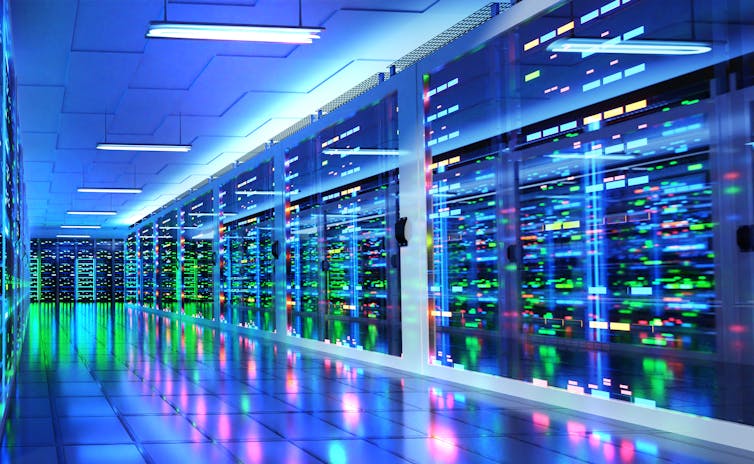As investment in AI continues to grow around the world, the New Zealand government has been deploying its services across government and encouraging businesses to embrace the technology.
But the environmental, social and governance risks of AI investments are still under-explored.
In particular, the increasing power generation of AI requires the growth of the carbon footprint of this technology at a time when countries are expected to commit willingly to reduce emissions coming up at the United Nations climate conference (COP29) next month.
We argue that questions about the nature and culture of AI should be part of the discussion about the role it should play in New Zealand.
The social cost and risks of AI
Meanwhile, the use of AI around the world increases the power of a small country. This rate is expected to double by 2026. Increasing AI is also expected to double the number of data centers in the next four years.
The increasing reliance on data centers creates sustainability concerns. The average data center already uses about 40% of its energy for cooling, often relying on local water.
AI also poses social risks to employees and users. Its potential could lead to layoffs and the well-being of AI training workers could be affected if they are repeatedly exposed to negative situations.
Regulatory challenges include data privacy concerns, copyright infringement and AI visualizations. This result refers to results that make sense but are not correct or inappropriate, but still influence decision making.
Why is this important to New Zealand?
Like other countries, Aotearoa is rapidly adopting AI innovations, from business to the courts, education and government itself.
The recently announced partnership between Microsoft and Spark Business Group means New Zealand is entering the data center industry. Hyperscale data centers allow for increased processing and storage requirements.
Once completed, the new hyperscale cloud community promises to grow New Zealand businesses locally, all powered by 100% carbon-free energy provided through a partnership with Ecotricity.

Getty Images
Meanwhile, much of New Zealand’s growing environmental and cultural capital is diverted elsewhere. The New Zealand issue is currently one of the most pressing issues in the world. Asking a question at ChatGPT in New Zealand means relying on an external data center, using a lot of electricity from their municipal grid and possibly their own water for cooling.
Data centers are scattered all over the world and most of them are in developing countries. Even where data centers use renewable electricity, this diverts supply from other important services, such as electrification of public transport.
This is a challenge because other countries (often poorer) are taking the burden of using AI on New Zealand. It can also be a legal problem. As a developing country and a party to the Paris Agreement, New Zealand is committed to taking the lead in tackling climate change. This means setting progressively lower emission reduction targets (known as nationally determined contributions).
Last year’s United Nations global climate report confirmed that all countries are working to reduce temperatures to below 2°C above pre-industrial levels. New Zealand’s contribution is also declining.
The tension between increasing the use of reproductive AI and meeting climate targets is one that climate change minister Simon Watts and his team will be grappling with in the run-up to next month’s climate conference in Azerbaijan.
Using technology in a grassroots and smart way
In order to continue New Zealand’s commitment to tackling climate change, we must focus on solutions to the challenges it faces to address the high environmental, social and management costs of AI emissions.
“Digital sobriety” is a concept that encourages reducing the use of digital devices. It’s one way to think about the trade-off between using AI and what’s growing.
This is consistent with our efforts to reduce water use and waste. It also involves asking ourselves if we really need the latest smart device or big data plans.
Another way to deal with the slowness is to use smaller languages instead of larger ones. These smaller versions use less computing power and are suitable for smaller devices.
Incorporating stability into AI guardrails can also help balance some of the inherent challenges of artificial AI. Guardrails are filters or rules placed between the inputs and outputs of AI to reduce the chance of error or bias. Currently, these safeguards focus on fairness, transparency, accountability and security.
As the Paris Agreement acknowledges, the use of sustainable food systems plays an important role in the fight against climate change. Critical thinking about how we adopt hyperscale generative AI in New Zealand in sustainable ways can help guide the country towards a more reliable relationship with this powerful and rapidly growing technology.
#promoting #releasing #threats #human #capital